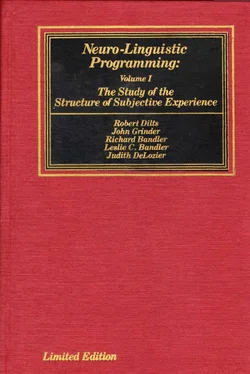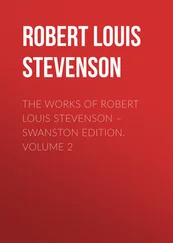By knowing the basic elements and generative rules of a particular model of behavior, whether that of science, technology, business, law, therapy, medicine, politics or education, it isn't necessary to spend years studying the particulars of behavior within each model in order to master it. Indeed, progress in the efficiency and potential of education has always occurred as more elegant models have developed.
1.7 Representational Systems: The Building Blocks of Behavior
The basic elements from which the patterns of human behavior are formed are the perceptual systems through which the members of the species operate on their environment: vision (sight), audition (hearing) , kinesthesis (body sensations) and olfaction/gustation (smell/taste). The neurolinguistic programming model presupposes that all of the distinctions we as human beings are able to make concerning our environment (internal and external) and our behavior can be usefully represented in terms of these systems. These perceptual classes constitute the structural parameters of human knowledge.
We postulate that all of our ongoing experience can usefully be coded as consisting of some combination of these sensory classes. In our previous work (see Patterns II) we have chosen to represent and abbreviate the expression of our ongoing sensory experience as a 4–tuple. The 4–tuple is shown visually as:
< A e,i , V e,i , K e,i , O e,i >
Here, the capital letters are abbreviations for the major sensory classes or representational systems that we use to make our models of the world:
A = Auditory/Hearing
V = Visual/Sight
K = Kinesthetic/Body Sensations
O = Olfactory/Gustatory—Smell/Taste
The superscripts "e" and "i" indicate whether the representations are coming from sources external, "e", to us, as when we are looking at, listening to, feeling, smelling or tasting something that is outside of us, or whether they are internally generated, "i", as when we are remembering or imagining some image, sound, feeling, smell or taste. We can also show the 4–tuple iconically as:

The following excerpt from Patterns II will further assist the reader in understanding the 4–tuple:
"Assuming that you are a reader who at this point in time is sitting comfortably in a quiet place and that you are reading alone, the 4–tuple can be used to represent your present experience of the world as follows:

The specific 4–tuple which represents the reader's experience where i is the referential index of the reader and the blankspace Ø indicates no experience in that mode.
"In words, the reader's present experience of the world is represented by a description of the visual input from the words, his present kinesthetic sensations and the olfactory sensation available. Since, by our assumption, the reader is in a place where he is presently receiving no auditory input from the external world, the value of the variable A t(the auditory tonal portion of his experience) is Ø. The values of the V, K and O variables are specified by a description of the input from the world that is impinging on the reader at this point in time. Notice that in specifying the 4–tuple for the reader's present experience, we restricted ourselves to representing experience originating in the world external to the reader. The 4–tuple can also be used to represent the reader's total experience — that is, his present ongoing experience independently of whether it originates in the world external to the reader or not. We have found it useful in our work to identify the origin of the portion of the experience described in the 4–tuple — that is to distinguish between which portion of the experience represented by the 4–tuple originates in the world external to the person whose experience is represented by the 4–tuple and which portion is generated by the person's own internal processes. One easy way of representing this distinction is by simply attaching a superscript to each component of the 4–tuple — either an i (internally generated) or an e (externally generated). Thus assuming that the reader is reading with internal dialogue at this point in time and using the superscripts which distinguish the internally generated from externally originated components of the 4–tuple, the reader's 4–tuple would look like:

“As with all the distinctions in the model, this superscript distinction between internally and externally generated experience will be employed only when it is useful for the task for which it is to be used.”
In NLP, sensory systems have much more functional significance than is attributed to them by classical models in which the senses are regarded as passive input mechanisms. The sensory information or distinctions received through each of these systems initiate and/or modulate, via neural interconnections, an individual's behavioral processes and output. Each perceptual class forms a sensory–motor complex that becomes "response–able" for certain classes of behavior. These sensory–motor complexes are called representational systems in NLP. [8] The concept of representational systems and various methods of utilization have been discussed at length in other of our works. Specifically, The Structure of Magic Volume II, Patterns of the Hypnotic Techniques of Milton H. Erickson M.D. Volumes I & II, and Changing with Families Volume I.
Each representational system forms a three part network: 1) input, 2) representation/processing and 3) output. The first stage, input, involves gathering information and getting feedback from the environment (both internal and external). Representation/processing includes the mapping of the environment and the establishment of behavioral strategies such as learning, decisionmaking, information storage, etc. Output is the casual transform of the representational mapping process.
"Behavior" in neurolinguistic programming refers to activity within any representational system complex at any of these stages. The acts of seeing, listening or feeling are behavior. So is "thinking," which, if broken down to its constituent parts, would include sensory specific processes like seeing in the mind's eye, listening to internal dialogue, hawing feelings about something and so on. All output, of course, is behavior—ranging from micro–behavioral outputs such as lateral eye movements, tonal shifts in the voice and breathing rates to macro–behavioral outputs such as arguing, disease and kicking a football.
Our representational systems form the structural elements of our own behavioral models. The behavioral "vocabulary" of human beings consists of all the experiential content generated, either internally or from external sources, through the sensory channels during our lives. The maps or models that we use to guide our behavior are developed from the ordering of this experience into patterned sequences or "behavioral phrases," so to speak. The formal patterns of these sequences of representations are called strategies in neurolinguistic programming.
The way we sequence representations through our strategies will dictate the significance that a particular representation will have in our behavior, just as the sequencing of words in a sentence will determine the meaning of particular words. A specific representation in itself is relatively meaningless. What is important is how that representation functions in the context of a strategy in an individual's behavior.
Читать дальше














